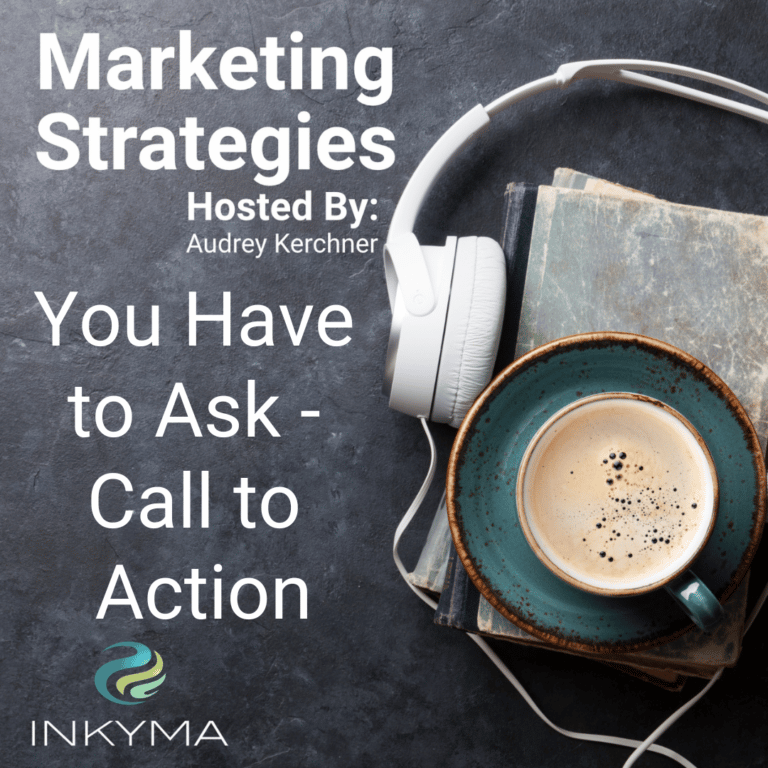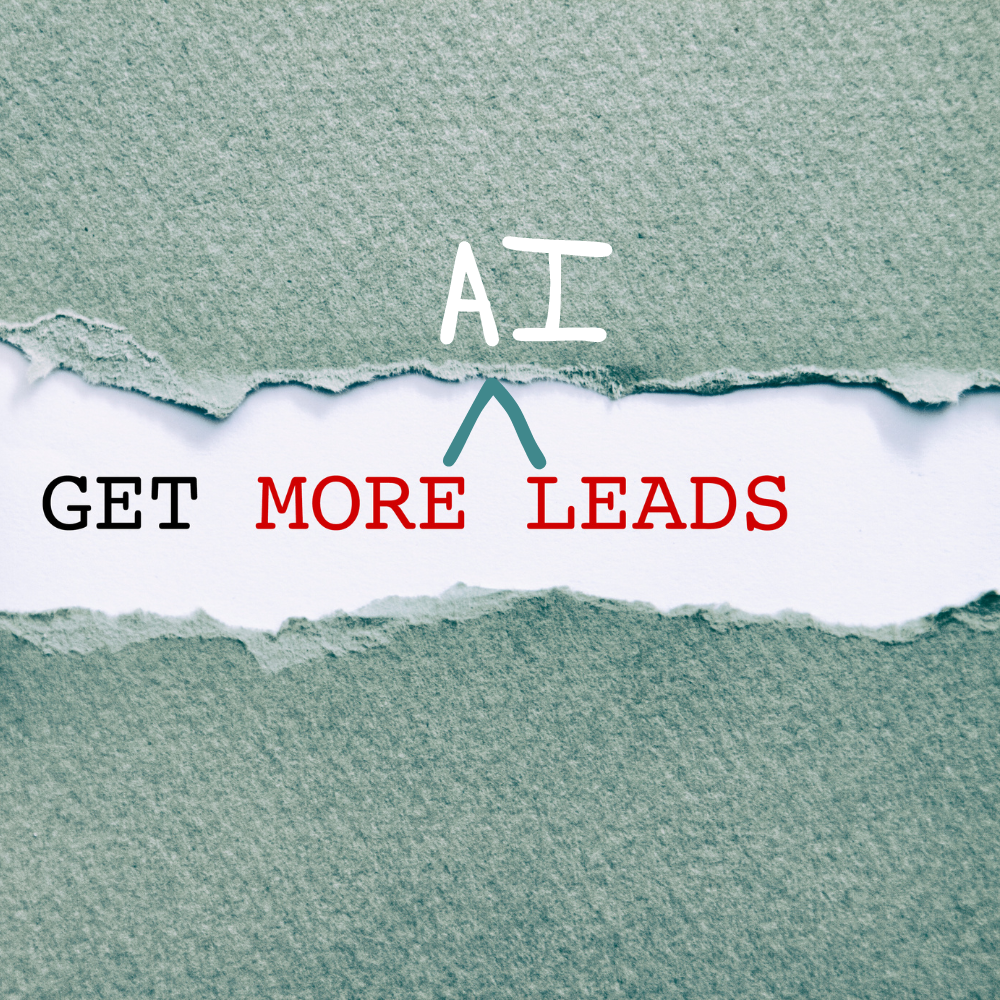Calls to action on your marketing assets are the best way to get business for your company. Calls to action have a bad rap because many businesses need to do it the right way but come across as salesy, pushy, or just annoying.
In today’s episode, I will share with you the right way to create calls to action that are helpful to your potential customers and not annoying. I’m going to go over:
-What a call to action is
-How to think about calls to action
-Effective calls to action
-How to implement them
Links Mentioned In This Episode
Products We Recommend
Episodes Mentioned in the Podcast
Episode 46 – Drive Audience Engagement With Welcome Emails
Episode 34-Product Review and Deep Dive: Mailchimp Email and CRM System
Episode 19- Email Sales Funnels For Lead Generation
Episode 14 – Email vs. Social Media Marketing
Episode 3 – Top 5 website design mistakes
Love our Podcast? Buy us a cup of coffee to help keep creating for you – paypal.me/InkymaMarketingstrat
Sign up for our newsletter at marketingmasterminds.co Free marketing educational content with how-to videos delivered to your inbox.
What we discussed:
- What is a call to action
- Effective CTAs (Calls to Action)
- How to use them in your business
You have to Ask – Call To Action Transcript
*Not ready to give this episode a listen or watch just yet? Below is a rough transcript of today’s episode.*
I look at hundreds of websites for work every year. Look at more than that overall. and there are a few things that I see that are missing from a lot of websites that are actually costing them customers and leads. The number one thing that I see that’s missing from websites are called action, phrases and button.
in sales, you’re far more likely to get the sale if you ask for the business. And your marketing assets are no exception to this rule. So today I’m gonna talk about what a good call to action is. how to help you not feel like a salesperson or salesy, and where to put them so you can get more leads for your business.
little bit of housekeeping stuff. As usual. If you’ve listened to other, episodes in the show notes, there are links to product recommendation articles, other podcast episodes that support, what I am talking about here today, along with a rough transcript of this entire episode.
So if you’re looking for something specific, you can go find it. When I do mention products, a lot of the times we. partners or affiliates with those products, and it’s because we use them all the time. I either really like them. It’s part of our software stack. And so I’d like to recommend to you to use, because that’s what we do.
And so clicking through, we do get a small commission, but think about it as helping us out, to continue to make all this great free content for you. Okay, so with calls to actions, let’s start out with what is it, right In its simple form, it’s a prompt on marketing pieces, that asks the user to take a specific action.
And to be honest, some companies overdo them. This is where you start seeing all this big flashy stuff with stuff coming out and popping up. and that sort of thing. And I think it leaves a bad taste in a lot of people’s mouth, but in their simplest form, that’s really all they are is their prompts and they can be subtle.
and they don’t have to be overbearing. Now, where to use them, you should use them. everywhere you’re promoting awareness of your business. So every single marketing tactic that you have should have a call to action on it. Otherwise, there’s no point in creating that piece. I think it, dilutes the efficiency of the piece if it doesn’t have some type of call to action on it.
We’ll talk about the specifics of an effective call to action in a moment. so places where, they are used websites, absolutely a hundred percent your Google Business listing. You can actually put call to actions in there, your social media profiles. On your business card, videos, if you’re creating videos, emails, print pieces, any other kind of print piece.
So postcards leave behind door hangers. if you’re doing print ads, they should all have a call to action ads, especially cuz you’re paying a lot of money for these and they have to have some type of a call to action on them so they’re effective. And then of course your digital ads should have them.
So I think the reason why I see so many marketing properties out there that don’t have call to actions is because a lot of people have, mental barriers for asking for business. There’s a stigma around it because what we see when we say, oh, ask for the business is immediately like a pushy salesperson that won’t stop asking for the business that constantly bombards you or someone that sends you email after email over and over again.
or you go to a website and these things flash up. They pop up a video auto plays, and that’s not what they should be. That’s. An example of effective call to actions, because if the first thing that you do is you annoy someone, how likely do you think you’re gonna get the business? And most business owners, I know they got into business because they’re good at something, right?
A service, a trade. a craft of some sort. and they don’t wanna come across as pushy or sleazy or salesy. They wanna be known as being very good at their craft or service. So the two feel very disjointed. and so that sort of works if you’re in person, but if you’re online, you need tell them what the next steps are.
And that’s really what a call to action is, is. you’re talking about, okay, if this is something you want, here’s what you do next. So by doing good call to actions, you’re actually being helpful to the person that’s looking for that product or service. And by not doing call to actions, you’re being unhelpful on your marketing materials.
Let’s say you create this great piece, you tell them that you know how to solve their problem, you articulate that, and then you don’t tell them what to do next. You just say, That’s it. I know how to do this. and maybe you throw a phone number or an email address on there, or just a website address.
How do they know what to do next? Are they supposed to call, are they supposed to schedule a time? If you don’t make it specific and you make them work too hard, to figure out what’s next. They might not have the mental bandwidth at that moment in time to do it, and they may step away and do it later.
So don’t make ’em work really hard. Tell ’em exactly how easy it is to work with you, what the next step is. and that’s how you’re gonna get the lead by being helpful, not salesy. and honestly, using those overbearing call to actions and the repetitiveness. Isn’t gonna work anyway if the person isn’t in the market, for what you’re selling, right?
So there’s two reasons why those don’t work, but I think people just use them because they feel like they have to. But trust me, you actually don’t have to. So when it comes to call to actions be helpful and make it easy for them to take the next step, if they are interested in working with your business or buying something from your business.
So now let’s talk about what an effective call to action is, cuz I spent some time there talking about what not to do. So simply what you wanna do is be very specific and be very clear. What do you want them to do? so you wanna use terms like call, schedule, sign up, buy, those are good ways to start.
you’re called to action. So if you want them to call you, you may just put call and then the telephone number, and then if it’s on a website or in an email, make it click to call. So they don’t even have to dial the number. Things you don’t wanna do is you don’t wanna use phrases like ACT or don’t let it get away, or don’t delay a limited offer expires.
These are not specific act Now. what action do you want me to take? Say what the action is not, to tell them to act now. They get that part of it. You want them to do something very specific. So in addition to that, there’s a couple other things you can layer on top of that that could actually make them even.
More effective. So the first one for that I have is giving them ownership of the action by using me, my, you, yours type of language. So instead of saying sign up for the newsletter, You could use something like, sign me up for my newsletter. It’s giving them ownership and they’re more likely to take the action cuz they’re like, oh, this is mine.
I can do this. It’s very subtle, but it actually works. and instead of just having a buy button, if like you’re selling shoes, you can say, buy your shoes today. So you’re putting in a little bit of a timeframe in there like, yeah, you go ahead, do it today, you deserve it. And then they’re already yours.
Just go ahead, buy your. If you stop and listen to people, we use this in language a lot, right? If you’re trying on shoes and youwould you like me to wrap your purchase? They haven’t even bought it yet, but they’ve already given them ownership and it’s more likely that they’re going to buy.
little subtle changes like that. The next thing is personalize called actions where you can, so you can’t do this everywhere, right? You can do it in email. Certainly the majority of the, email systems out there will allow personalization. I know for a fact MailChimp and Constant Contact both allow personalization, so I’ll put links to those systems.
If you’re looking for a mailing system in the, But don’t do it in the subject, don’t do it as a salutation at the beginning of the email, People, when they see their name, they will read what’s around it, right? Because again, it’s that ownership thing that is my name. What are you saying? And I think it’s wasted in those other spots.
Where I like to put it is actually as part of the call to action, because when they see their name, it grabs their attention and then they read the rest of the statement. So if you say something like, Audrey, buy your coffee refill. . then I’ve taken those two things and combined them together and made a much more effective call to action.
And nothing flashes and nothing is overwhelming, right? Simply by just putting it in there, it catches the eye. And then you can also do other things like making it, the accent color of your brand color palette, meaning it’s that high. interest color, that you use sparingly in your brand.
That’s the time to use it is on these buttons. And when you combine all those together, you create more effective call to actions without being overbearing. The other thing that’s necessary is you need to repeat your call to actions frequently. not pushing them in people’s face, but where they make sense.
The rule of thumb that I like to follow is if they scroll, flip or turn a page, then you add a call to action where it’s appropriate. goes back to that not making them work so hard to take action because the first, second or third time they saw it, they might not have been ready. They may have been looking for more information.
However, let’s say they get to a certain point. They read a testimonial at the bottom of your page and they’re like, okay, I’m ready now. You want that button very, very close to where they’re already at versus making them to go all the way back to the top. And then the, last effective piece that I have for you.
always have a secondary call to action. If your primary call to action is to schedule a time to make a phone call, to fill out a contact form, right? That’s contact that’s wanting to engage with you, which is great, but sometimes people are not ready to engage, at that moment in time, especially if you have long lead time type of products like, building construction renovations.
. Certain services like that are seasonal, but you’re looking at them before season. But they think to themselves, oh, I wanna come back to this. I like what this says, I’m just not ready right now. That’s what the secondary call to action is for. and typically what I like to do, cuz it’s the easiest and best, is a newsletter signup.
Because what happens is if they sign up for the newsletter and you are consistent with sending out your new. I’m putting a few links to email marketing and newsletters and all that good stuff in the show notes as well. I’ve done a bunch of podcast episodes about that, is it allows you to stay with them without being pushy, right?
Because your newsletters are educational, they’re helpful, they might find the information interested. If they signed up, they’re already interested, and they get to see, even if they never open the email, they get to see your name in the inbox so that when they’re ready, a week, two weeks, two months, four months from now to actually purchase the service.
They’ve seen your name several times, and then they can go back and actually find your emails in their email system. to then reach out. That’s why it’s important to have call to actions in the emails as well, and not just link them back to the website. Okay, so let’s talk about what your next steps are gonna be.
This is really the meat and potatoes of this episode is you know, we all kind of know what call to actions are. We’ve talked about how they’re effective, but how are you going to implement them today? . So you got one or two paths. Your first path is, let’s say, you’ve decided I’m not gonna do CTAs, but I’ve changed your mind and now you wanna do call to actions.
the first place to start is with all of your marketing materials, is your website. The reason is, is that your website is, Nine times out of 10, the place that you push everybody back to with all of your other marketing tactics. and it’s gonna take time to go through all of your marketing tactics and change out and add call to actions and all that good stuff.
So start from your website and then work your way out. Think of it of like a Starburst, right? the website is your center core and then everything hangs off. And so on your website, you start with your homepage, cuz 99% of the time, that’s where people are gonna land unless you put a specific link in there.
So on your homepage, you want it in your header specifically top right corner. your primary call to action there. Do not put your social media icons there. Do not put your logo there. The top right corner is where our eyes gravitate towards when we first come to a website. There have been. A lot of studies and heat maps that show, this is exactly where we track first, right?
So you want your call to action there first. Then I always like to put it under the hero message or under the hero image. So they’ve seen the initial message and then we’ve repeated the call to action. Same language, somewhere in the middle of your page, maybe where you’re talking about your services. what you provide, how you solve the problem, the benefits of, being with you or using your company somewhere natural around there so that they see the benefits and go, oh, I see the benefits.
Boom. They wanna work with you. So if you’re having the conversation with the person, where would it be likely for them to make that decision? And you might need it twice depending on how long your homepage actually is, and then you want it in your footer as well near the bottom after they get there.
A lot of times this is a contact form. or it could be to schedule something, you know, whatever your, call to action is. And then if you’re using a templated type of site, your header and footer should travel throughout the entire site for all of your subpages. So those are covered there. Then you wanna look at your other, service pages, about page, all that other good stuff, and add an additional call to action in.
So once you’ve got your website all squared away, then you wanna focus next on your outbound emails and your social profiles. I would even say your social profiles, because really the purpose of people finding you on social media is to generate that awareness to work with you. and so you want them to take that action there if they can find you.
finding you on social media is a bit of a tricky thing. but it does happen. And so you wanna have the right call to actions in place for that. And then if you are doing an existing, email newsletter or you’re doing a sales funnel series, or just emails are going out, put the direct call to action in there, as well.
And then that’s where you can add that personalization too. Digital ads. Those I would look at next only because, when you create the digital ad, you have to kind of follow their workflow process, and usually a call to action is part of that process. They’re either going to assign you the generic one or they give you one to choose from, depending on what you’re doing.
But go back and double check them anyway. and then if you are renewing, any type of a print ad or a mailer or having, reprinting of business cards, postcards, other types of stuff, that’s when you look at those, I’m not recommending that you go out and reprint all of your company’s business cards with a call to action on it and throw away the old stock.
Just do those when you’re, renewing everything. . So if you have spent some time adding calls to actions, go back and take a look at them in the same order and make sure that they are specific and clear. and that you’re actually repeating the same language. I think sometimes what people do is if I use this language at the top, I should use different language at the bottom and that’s not true.
You want it to be repetitive because people are glancing through, they’re not looking at the site as often as you are. They didn’t write the language. It’s not stuck in their head. The repetitiveness allows for that sticky quality to happen and it becomes familiar and people will do things that are familiar to them.
Repetitive language actually works in your favor, so don’t feel like you have to change the language up and think of different things. No. Come up with one good, solid language and use it throughout everything, all in the same place. . And then as I said before in email, add that personalization if and where you can, if you have a place where people log in to your site, like their registered users, you could also add personalization to the website as well.
Again, do it in the call to actions. and I think you’re gonna see a big difference there. so here are my final thoughts for you on. The reason call to actions are so important is that people don’t know your business, they don’t know your industry, they don’t know how navigate, how to make it work.
especially for bigger ticket things. online purchases, they’re a little easier. We kind of all know how our shopping cart works now, but. I don’t know how to apply for a mortgage with a local lender, if that’s the one that I wanna use. I need a prompt to tell me this is your next step, or to work with a lawyer, or to get a estimate from a contractor of some sort.
I need guidance, I need help, and the more helpful and the more guidance you give me, the more likely I’m gonna work with you. Then I am a competitor who isn’t offering that kind of helpful, prompt.
So looking at calls to action this way I think is a good way to remove that mental barrier, especially, for those of us that are craftsmen in what we do. and especially if we wanna educate and be helpful and be seen as subject matter experts. Part of your expertise is also guiding people through your process of how you get from point A to point B.
A lot of times that’s why they hire you over someone else in your field. so it’s not sales. at all. It’s actually being very helpful when you give them calls to action. So keep that in mind when you think about,using calls to action. . So here at Inma, we love to give back to the business community and we have several ways, that we would love to interact with you.
first of all, I provide a free 45 minute consultation. Just go to inma.com. That’s i n k yma.com. Upper right hand corner, click on the call, the action button that says Schedule a marketing evaluation. yeah, I eat my own dog food for sure. Pick a time. We are on the calendar together. We can talk about your call to actions.
We can talk about your website, we can talk about seo, anything marketing. I am up for having that conversation. If you just have a quick question or would like to suggest a show episode, I love those suggestions. Go all the way to the bottom, fill out the contact form. I actually, we will definitely get back to you.
And then we have our marketing mastermind blog. There is a link in the show notes to get to that directly. And this is where we share, a lot of information about how to do certain functions inside of WordPress, MailChimp, all the systems that we use, we do a lot of tool recommendations there. just so that if you do have to DIY your marketing, you’re doing it right.
And when you’re there, you can sign up for the, marketing Mastermind newsletter where we push that content out to you. And the newsletter’s actually a little bit different. I’ll have a core video that I’m sharing, and then because of all the extra content that we’ve created over the years about marketing, I create like a little, class where there’s podcast episodes and articles that support.
the video that was just released, to give you the full breadth and depth around that concept because marketing’s deep and marketing is wide and you can’t learn everything in a 10 minute video. So hopefully you found today’s episode useful for you and your business. If so, consider sharing it with other business owners that you know, they probably.
misconceptions about calls to action and need to understand the right way to do it. And so by you sharing that, you help the business community at large. cuz that’s really what we’re here for, at this podcast is to help the entire business community grow and thrive. So thank you so much for listening and I hope you have an amazing day.



























